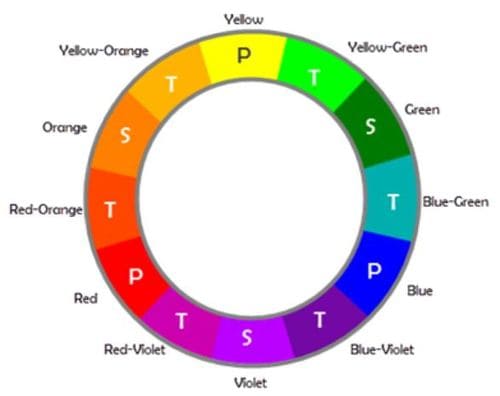Colour makes any room pop. The perfect paint shade and finish can make a small space feel bigger, enhance the lighting, or add that perfect splash of colour to an accent focal wall that jolts your day like your morning cup of java.
Finding that perfect paint colour is the challenge. These tips and ideas may be useful to help you with the process of choosing paint colours.
The Colour Wheel
The colour wheel is your point of reference when choosing a decor scheme. From the paint manufacturing companies to interior designers who refer to it when creating magnificent colours for homeowners to choose from. To make an impact with paint colours in any space start with the colour wheel as a guideline.
 Colour schemes that use shades of the same colour are referred to as monochromatic while the adjacent colours on the colour wheel like are called analogous. When choosing colours like red and green for example that are on the complete opposite of each other on the colour wheel, these are referred to as complementary. All colours except for white come from primary colours. Blue, yellow and red are your primary and the combinations of these three are your secondary.
Colour schemes that use shades of the same colour are referred to as monochromatic while the adjacent colours on the colour wheel like are called analogous. When choosing colours like red and green for example that are on the complete opposite of each other on the colour wheel, these are referred to as complementary. All colours except for white come from primary colours. Blue, yellow and red are your primary and the combinations of these three are your secondary.
Primary Colours are combinations of red, yellow and blue that when added together create a pure white light. They are considered dominant colours that cannot be made from other colours. While the Secondary Colours are the mix of two primary colours. When you mix red and blue you get violet or purple, mixing red with yellow gives you orange, blue and yellow creates a green, just like blue and red gives you magenta, or red and green makes yellow, while green and blue give you a cyan shade of colour.
Paint Colours
Paint is the most affordable and easiest way to change the look of any room. Choosing paint colours is a personal reflection of our feelings. Here are a few tips to keep in mind when looking through the variety of paint colour samples, chips or fan decks to pick your home painting colour decor scheme. It may also be a good idea to hire a design consultant or interior designer to help you.
 Painting your favourite colour creates an atmosphere and mood and is also an expression of your creativity and personality.
Painting your favourite colour creates an atmosphere and mood and is also an expression of your creativity and personality.
Bold paint colours include reds, blues, greens, pinks, and purples, while neutrals are the beiges, grays and whites. Accent colours add a pop of colour to any room or space. Painting one wall of the room with a secondary colour helps bring out the primary colour and give focus to that one area. Highlighting a fireplace wall for example in a family room, or painting a smaller area like the hallway or a powder room in a primary bold paint colour is complementary.
Neutral Colours include brown, grey, and white. White is usually saved for the ceilings, trim, crown moulding, baseboards and doors and frames, while the browns and greys are used to bring the serenity of neutral balance to the walls in any room. They will blend perfectly and the white will showcase the carpentry wood work like crown molding and wainscotting.
Ask For Advice From Painters To Help Choose Paint Colours
If doing the paint work yourself is not on your DIY list, hiring professional painting contractors is advisable. They can provide you with the knowledge and experience of years of being in the trade and help you with the paint colour consultation to create the perfect balance and tie everything together in every room. From choosing the perfect colour scheme, to giving advice on what kind of finish or sheen to use, it can be your best bet to find a painter near you.
Get a painting estimate from a reliable painting company near you with the best reviews and testimonials that provide you with the full services to make your home the envy of your neighbors, friends and family.
Let’s Get Started With A Painting Estimate
This post was originally published on May 11, 2015 @ 07:00 and updated on Aug 26, 2019 @ 0700
